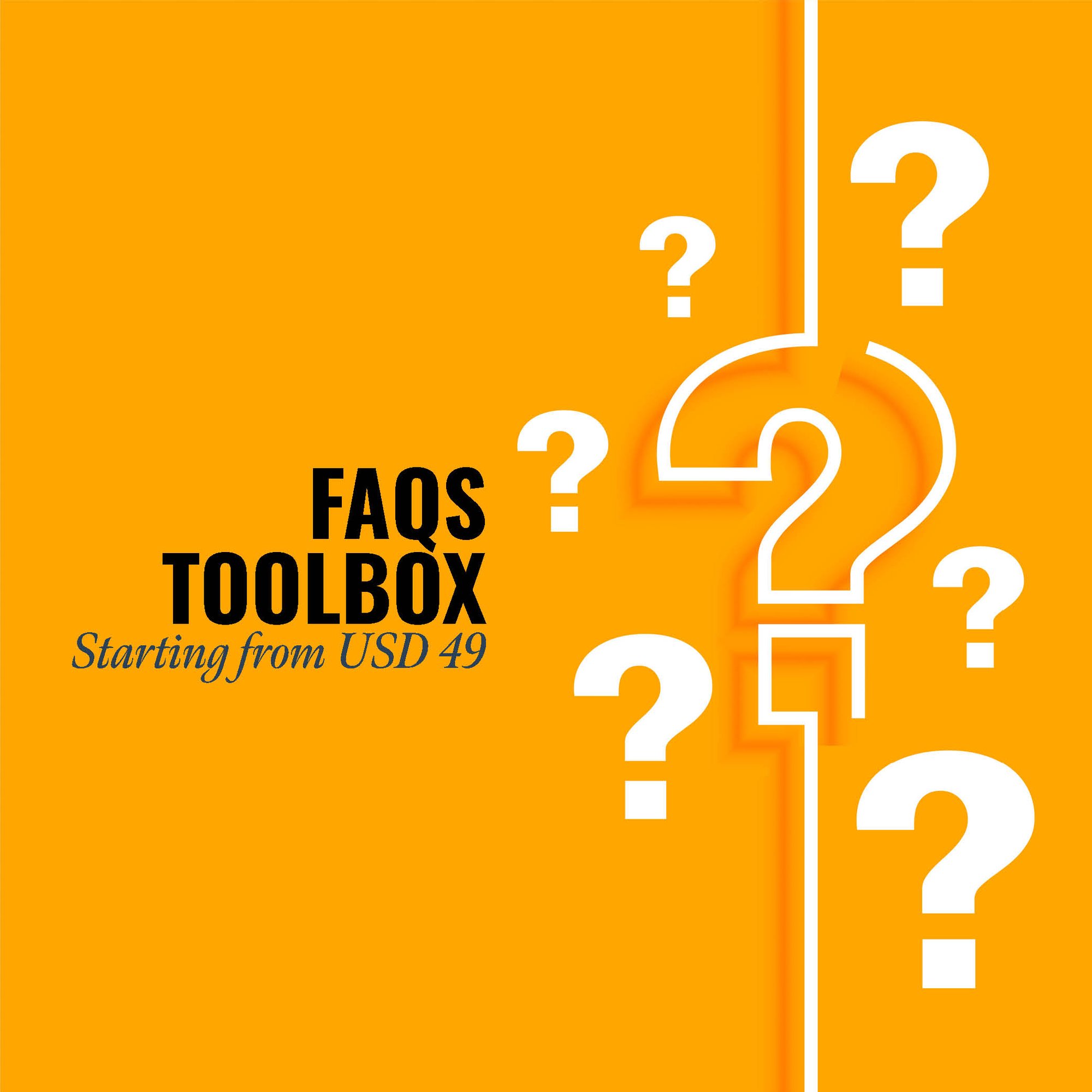The Cybersecurity department in a multinational organization plays a critical role in safeguarding digital assets, sensitive information, and infrastructure from cyber threats. It develops and implements strategies to prevent, detect, and respond to security incidents, ensuring compliance with regulatory requirements and industry standards. The department conducts risk assessments, deploys security controls, and educates employees on best practices. By continuously monitoring and adapting to evolving threats, it preserves the organization's reputation, operations, and customer trust in the digital age.
Standard Operating Procedures (SOPs) are pivotal in transforming the Cybersecurity department of a multinational organization into a proactive and resilient force against cyber threats. SOPs provide structured frameworks for all aspects of cybersecurity operations, including threat detection, incident response, vulnerability management, and compliance.
Firstly, SOPs ensure consistency in cybersecurity practices across different regions and departments, promoting uniformity in security measures and reducing human error. They establish clear guidelines for implementing and maintaining security controls, enhancing the organization's overall security posture.
Secondly, SOPs streamline incident response procedures, enabling swift and effective mitigation of cyber attacks. They delineate roles and responsibilities during a security incident, facilitating coordinated actions to minimize damage and restore operations promptly.
Furthermore, SOPs support continuous improvement by documenting lessons learned from incidents and security audits. They guide periodic reviews and updates to security protocols, ensuring alignment with emerging threats and regulatory changes.
Ultimately, SOPs in the Cybersecurity department foster a culture of security awareness and preparedness, empowering personnel to proactively defend against cyber threats while maintaining operational continuity and safeguarding the organization's reputation.
TOP 100 STANDARD OPERATING PROCEDURES FOR CYBERSECURITY DEPARTMENT
- DSOP-104-001: Standard Operating Procedure for Cybersecurity Risk Assessment
- DSOP-104-002: Standard Operating Procedure for Security Policy Development
- DSOP-104-003: Standard Operating Procedure for Access Control Management
- DSOP-104-004: Standard Operating Procedure for Endpoint Security Management
- DSOP-104-005: Standard Operating Procedure for Network Security Monitoring
- DSOP-104-006: Standard Operating Procedure for Incident Response Planning
- DSOP-104-007: Standard Operating Procedure for Vulnerability Assessment and Management
- DSOP-104-008: Standard Operating Procedure for Security Awareness Training
- DSOP-104-009: Standard Operating Procedure for Patch Management
- DSOP-104-010: Standard Operating Procedure for Identity and Access Management
- DSOP-104-011: Standard Operating Procedure for Firewall Configuration and Management
- DSOP-104-012: Standard Operating Procedure for Intrusion Detection and Prevention
- DSOP-104-013: Standard Operating Procedure for Data Loss Prevention
- DSOP-104-014: Standard Operating Procedure for Encryption Management
- DSOP-104-015: Standard Operating Procedure for Security Incident Response
- DSOP-104-016: Standard Operating Procedure for Business Continuity Planning and Disaster Recovery
- DSOP-104-017: Standard Operating Procedure for Threat Intelligence Analysis
- DSOP-104-018: Standard Operating Procedure for Security Audit and Compliance
- DSOP-104-019: Standard Operating Procedure for Mobile Device Management
- DSOP-104-020: Standard Operating Procedure for Cloud Security Management
- DSOP-104-021: Standard Operating Procedure for Web Application Security
- DSOP-104-022: Standard Operating Procedure for Penetration Testing
- DSOP-104-023: Standard Operating Procedure for Security Incident Reporting
- DSOP-104-024: Standard Operating Procedure for Security Operations Center (SOC) Management
- DSOP-104-025: Standard Operating Procedure for Risk Mitigation Strategies
- DSOP-104-026: Standard Operating Procedure for Third-Party Risk Management
- DSOP-104-027: Standard Operating Procedure for Physical Security Integration
- DSOP-104-028: Standard Operating Procedure for Policy Enforcement
- DSOP-104-029: Standard Operating Procedure for Network Segmentation
- DSOP-104-030: Standard Operating Procedure for Threat Hunting
- DSOP-104-031: Standard Operating Procedure for Incident Triage and Analysis
- DSOP-104-032: Standard Operating Procedure for Security Awareness Campaigns
- DSOP-104-033: Standard Operating Procedure for Secure Software Development Lifecycle (SDLC)
- DSOP-104-034: Standard Operating Procedure for Disaster Recovery Testing
- DSOP-104-035: Standard Operating Procedure for Incident Handling Procedures
- DSOP-104-036: Standard Operating Procedure for Security Information and Event Management (SIEM)
- DSOP-104-037: Standard Operating Procedure for Cyber Threat Assessment
- DSOP-104-038: Standard Operating Procedure for Digital Forensics
- DSOP-104-039: Standard Operating Procedure for Security Incident Analysis
- DSOP-104-040: Standard Operating Procedure for Incident Response Plan Testing
- DSOP-104-041: Standard Operating Procedure for Cybersecurity Incident Communication
- DSOP-104-042: Standard Operating Procedure for User Access Reviews
- DSOP-104-043: Standard Operating Procedure for Network Security Architecture
- DSOP-104-044: Standard Operating Procedure for Security Configuration Management
- DSOP-104-045: Standard Operating Procedure for Security Incident Coordination
- DSOP-104-046: Standard Operating Procedure for Malware Analysis and Remediation
- DSOP-104-047: Standard Operating Procedure for Data Privacy Management
- DSOP-104-048: Standard Operating Procedure for Threat Detection Technologies
- DSOP-104-049: Standard Operating Procedure for Incident Response Simulation
- DSOP-104-050: Standard Operating Procedure for Security Awareness Assessments
- DSOP-104-051: Standard Operating Procedure for Security Incident Review
- DSOP-104-052: Standard Operating Procedure for Security Policy Review and Updates
- DSOP-104-053: Standard Operating Procedure for Cybersecurity Incident Resolution
- DSOP-104-054: Standard Operating Procedure for Secure Remote Access Management
- DSOP-104-055: Standard Operating Procedure for Security Incident Escalation
- DSOP-104-056: Standard Operating Procedure for Security Incident Documentation
- DSOP-104-057: Standard Operating Procedure for Data Breach Response
- DSOP-104-058: Standard Operating Procedure for Security Incident Follow-Up
- DSOP-104-059: Standard Operating Procedure for Security Incident Forensics
- DSOP-104-060: Standard Operating Procedure for Security Incident Recovery
- DSOP-104-061: Standard Operating Procedure for Security Incident Post-Mortem Analysis
- DSOP-104-062: Standard Operating Procedure for Security Incident Root Cause Analysis
- DSOP-104-063: Standard Operating Procedure for Security Incident Lessons Learned
- DSOP-104-064: Standard Operating Procedure for Security Incident Reporting
- DSOP-104-065: Standard Operating Procedure for Security Incident Tracking
- DSOP-104-066: Standard Operating Procedure for Security Incident Response Plan Development
- DSOP-104-067: Standard Operating Procedure for Security Incident Resolution Timeframe Management
- DSOP-104-068: Standard Operating Procedure for Security Incident Response Documentation
- DSOP-104-069: Standard Operating Procedure for Security Incident Response Team Coordination
- DSOP-104-070: Standard Operating Procedure for Security Incident Response Plan Validation
- DSOP-104-071: Standard Operating Procedure for Security Incident Response Plan Implementation
- DSOP-104-072: Standard Operating Procedure for Security Incident Response Plan Communication
- DSOP-104-073: Standard Operating Procedure for Security Incident Response Plan Evaluation
- DSOP-104-074: Standard Operating Procedure for Security Incident Response Plan Review
- DSOP-104-075: Standard Operating Procedure for Security Incident Response Plan Optimization
- DSOP-104-076: Standard Operating Procedure for Security Incident Response Plan Continual Improvement
- DSOP-104-077: Standard Operating Procedure for Security Incident Response Plan Documentation
- DSOP-104-078: Standard Operating Procedure for Security Incident Response Plan Training
- DSOP-104-079: Standard Operating Procedure for Security Incident Response Plan Testing
- DSOP-104-080: Standard Operating Procedure for Security Incident Response Plan Follow-Up
- DSOP-104-081: Standard Operating Procedure for Security Incident Response Plan Incident Severity Assessment
- DSOP-104-082: Standard Operating Procedure for Security Incident Response Plan Incident Communication
- DSOP-104-083: Standard Operating Procedure for Security Incident Response Plan Incident Handling Guidelines
- DSOP-104-084: Standard Operating Procedure for Security Incident Response Plan Incident Resolution Metrics
- DSOP-104-085: Standard Operating Procedure for Security Incident Response Plan Incident Priority Setting
- DSOP-104-086: Standard Operating Procedure for Security Incident Response Plan Incident Escalation Procedures
- DSOP-104-087: Standard Operating Procedure for Security Incident Response Plan Incident Reporting
- DSOP-104-088: Standard Operating Procedure for Security Incident Response Plan Incident Follow-Up Actions
- DSOP-104-089: Standard Operating Procedure for Security Incident Response Plan Incident Management Documentation
- DSOP-104-090: Standard Operating Procedure for Security Incident Response Plan Incident Root Cause Analysis
- DSOP-104-091: Standard Operating Procedure for Security Incident Response Plan Incident Resolution Team Coordination
- DSOP-104-092: Standard Operating Procedure for Security Incident Response Plan Incident Severity Assessment
- DSOP-104-093: Standard Operating Procedure for Security Incident Response Plan Incident Escalation Procedures
- DSOP-104-094: Standard Operating Procedure for Security Incident Response Plan Incident Communication Protocol
- DSOP-104-095: Standard Operating Procedure for Security Incident Response Plan Incident Handling Guidelines
- DSOP-104-096: Standard Operating Procedure for Security Incident Response Plan Incident Resolution Timeframes
- DSOP-104-097: Standard Operating Procedure for Security Incident Response Plan Incident Priority Setting
- DSOP-104-098: Standard Operating Procedure for Security Incident Response Plan Incident Escalation Criteria
- DSOP-104-099: Standard Operating Procedure for Security Incident Response Plan Incident Resolution Metrics
- DSOP-104-100: Standard Operating Procedure for Security Incident Response Plan Incident Accountability
This article is Uploaded by: Priyanka, and Audited by: Premakani.
The above list of SOPs is beneficial for the following activities. Standard operating procedures, SOP consulting, SOP services, Business process optimization, Operational efficiency, Process improvement, SOP development, SOP documentation, SOP implementation, Business process management, Process documentation, Procedure writing, Quality management systems, Compliance management, Workflow automation, Process standardization, Operational excellence, Business continuity planning, Risk management, SOP consulting services, SOP experts, Operational consulting, Process mapping, SOP training, SOP manuals, Process engineering, Business optimization, Procedure manuals, SOP templates, Efficiency consulting, SOP audit, Continuous improvement, Lean processes, Six Sigma, Process reengineering, SOP creation, Policy development, Procedure standardization, Business efficiency, Compliance solutions, SOP frameworks, Process guidelines, Operational standards, SOP compliance, Workflow efficiency, SOP best practices, Process control, Quality assurance, SOP systems, Operational audits, SOP support, Business improvement, SOP reviews, Process benchmarking, SOP analysis, Performance improvement, SOP maintenance, SOP optimization, Operational performance, SOP assessments, SOP planning, Process effectiveness, SOP projects, Operational risk, SOP tools, Business process reviews, SOP updates, SOP monitoring, Process compliance, Procedure audits, Business process audits, SOP strategies, SOP management, SOP solutions, Procedure optimization, Business standards, Operational procedures, SOP software, Quality procedures, Process audits, Procedure development, SOP workshops, Operational processes, Process manuals, Business procedure services, SOP for small businesses, Corporate SOPs, Standard operating procedure examples, SOP for startups, Industry-specific SOPs, SOP for manufacturing, Healthcare SOPs, SOP for retail, SOP for logistics, SOP for hospitality, SOP for education, SOP for finance, SOP for IT, SOP for marketing, SOP for HR, SOP for sales, SOP for customer service, SOP for procurement, SOP for supply chain, SOP for research and development, SOP for new product development, SOP for quality control, SOP for safety, SOP for environmental management, SOP for project management, SOP for construction, SOP for energy, SOP for telecommunications, SOP for pharmaceuticals, SOP for agriculture, SOP for food and beverage, SOP for automotive, SOP for aerospace, SOP for defens, SOP for healthcare providers, SOP for hospitals, SOP for clinics, SOP for insurance, SOP for legal firms, SOP for non-profits, SOP for government, SOP for NGOs, SOP for educational institutions, SOP for universities, SOP for schools, SOP for research institutions, SOP for laboratories, SOP for media, SOP for entertainment, SOP for tourism, SOP for real estate, SOP for facilities management, SOP for transportation, SOP for utilities, SOP for mining, SOP for chemical industry, SOP for textiles, SOP for fashion, SOP for electronics, SOP for consumer goods, SOP for retail stores, SOP for wholesale, SOP for e-commerce.
Your purchase includes 20 SOP Templates. Please note, checklists and forms recommended in the SOP Templates are not included. To access all 100 SOP Templates listed above, please select a quantity of FIVE. Our Customer Support team will contact you within one business day to gather your requirements. In the meantime, if you have already purchased the SOP Templates, kindly complete the SOP ToolBox Information Sheet.
For more information or SOP Plans please visit SOP ToolBox.
















